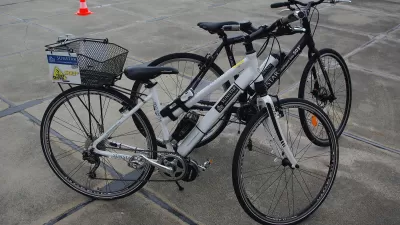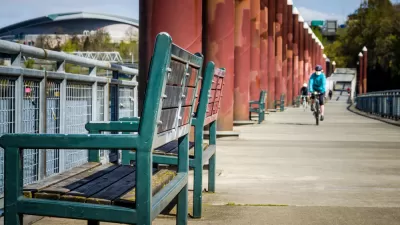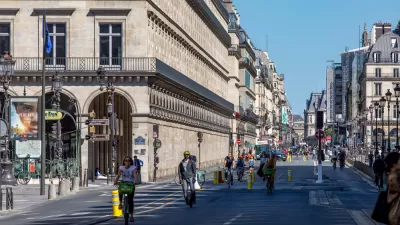With bike sales soaring as people seek out safe outdoor recreation, institutional support and investment can maintain the growth of cycling as commuters start going back to work.

As Americans sought out socially distanced ways to stay active and roads were suddenly cleared of intimidating traffic for much of 2020, bicycling boomed in popularity. In the United States, bike sales grew by 62%, while e-bike sales rose by a whopping 144%. However, writes Andrew J. Hawkins, American roads have also become more unsafe in recent years, with cycling deaths increasing by 38% in the last decade. And the traffic is coming back: after dropping by close to 40% in April, vehicle miles traveled in the United States rebounded to almost-average levels(down only 9% in September compared to the same month in 2019).
To sustain the growth of biking as a mode share rather than a short-lived trend, Hawkins argues that cities must take active steps to improve bike infrastructure and make new riders feel safe on the road. He suggests the federal government can fund programs that direct money toward bike lanes and offer tax credits for bike purchases to incentivize consumers, while cities can expand upon pandemic-prompted "slow streets" programs and temporary bike and pedestrian improvements. "It will be a turf war, as bikes will need to take physical space away from cars to maintain any forward momentum," Hawkins predicts, but the advances of 2020 gave us a glimpse into a world where two-wheeled transportation gets serious institutional support.
FULL STORY: How to keep the bike boom from fizzling out

Alabama: Trump Terminates Settlements for Black Communities Harmed By Raw Sewage
Trump deemed the landmark civil rights agreement “illegal DEI and environmental justice policy.”

Study: Maui’s Plan to Convert Vacation Rentals to Long-Term Housing Could Cause Nearly $1 Billion Economic Loss
The plan would reduce visitor accommodation by 25% resulting in 1,900 jobs lost.

Why Should We Subsidize Public Transportation?
Many public transit agencies face financial stress due to rising costs, declining fare revenue, and declining subsidies. Transit advocates must provide a strong business case for increasing public transit funding.

Wind Energy on the Rise Despite Federal Policy Reversal
The Trump administration is revoking federal support for renewable energy, but demand for new projects continues unabated.

Passengers Flock to Caltrain After Electrification
The new electric trains are running faster and more reliably, leading to strong ridership growth on the Bay Area rail system.

Texas Churches Rally Behind ‘Yes in God’s Back Yard’ Legislation
Religious leaders want the state to reduce zoning regulations to streamline leasing church-owned land to housing developers.
Urban Design for Planners 1: Software Tools
This six-course series explores essential urban design concepts using open source software and equips planners with the tools they need to participate fully in the urban design process.
Planning for Universal Design
Learn the tools for implementing Universal Design in planning regulations.
Caltrans
Smith Gee Studio
Institute for Housing and Urban Development Studies (IHS)
City of Grandview
Harvard GSD Executive Education
Toledo-Lucas County Plan Commissions
Salt Lake City
NYU Wagner Graduate School of Public Service





























